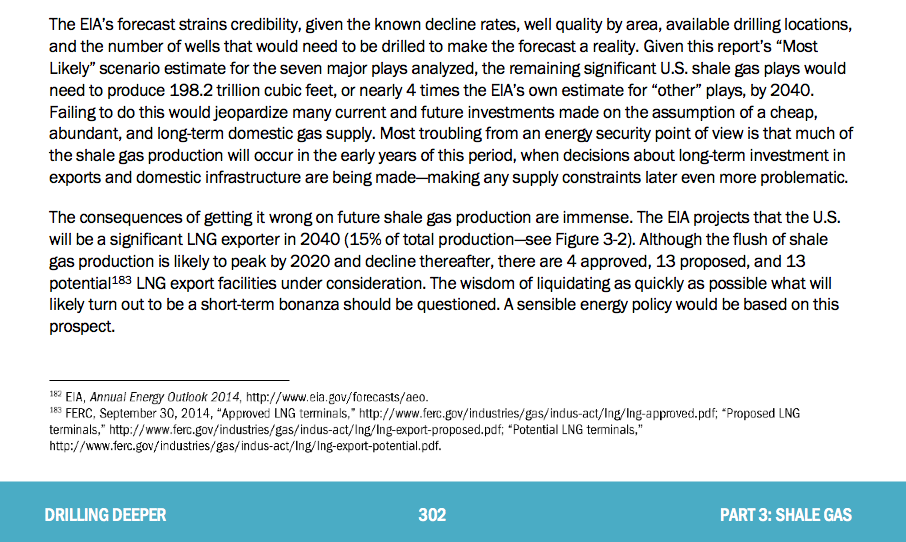Richard Ha writes:
We are getting ready to make huge liquified natural gas (LNG) decisions, and LNG is a big risk. We need to understand the risk and who’s going to be left paying the price.
The first time I heard about shale oil and gas was at an Association for the Study of Peak Oil (ASPO) conference. I attended five of those conferences, the only person from Hawai‘i to do so. Hawai‘i County paid for the trip to the 2010 ASPO conference, held in Washington D.C., and is still benefitting from that small investment.
That discussion about shale oil and gas though was at the 2009 ASPO conference, in Denver, and it turned into a sharp discussion between the geologist Art Berman and a drilling company executive.
Art said he had studied data from 4,000 wells in the Barnett Shale and found that the average well gave off 72 percent of its production in the first year.
The executive countered that his figures showed a hyperbolic curve indicating that production lasts for 22 years.
Somebody was wrong. Later I learned that hyperbolic curves only mean that the following year is less than the one previous.
I didn’t know the definition then, but common sense told me that at the end of 22 years, maybe just a gallon might be coming out per hour. I felt like the executive was just trying to sell stock.
Later, a study of 19,000 wells showed that the average well gave more than ninety percent of its production in its first five years. This was not rocket science – even a banana farmer could tell that you would need to replace one-fifth of the wells each year just to stay even. More if production is higher in the first few years.
As of 2010, it was common knowledge that the average shale oil and gas well depleted in a short time, and it was a subject of intense discussion among those of us who attended the ASPO conferences.
In the meantime, some of the folks out there trying to sell stocks were using the terms “resource” and “reserves” interchangeably in describing what was available. The phrase “Saudi America” started to be thrown around.
The U.S. Energy Information Administration (EIA) finally estimated that the U.S. had an economically accessible shale oil supply of about 100 more years.
But David Hughes, a Canadian geologist, challenged the availability of the Monterey Shale oil due to its geological characteristics. Instead of being flat, the resource rock was wavy and squished. It was hard to access via horizontal drilling.
And then this March, the EIA quietly changed its estimate. In a low-key announcement, it readjusted its estimate of Monterey Shale oil availability – which was two-thirds of our national recoverable supply – downward by an amazing 96 percent.
I saw the announcement and realized its significance immediately. Readjusting the estimate of the US supply of oil downward by two-thirds was a huge, huge deal. But the news kind of just slipped by.
Shale gas has the same characteristics of shale oil – it depletes rapidly. If you ask me who I believe about shale oil and gas? Based on his track record, I believe the data and conclusions of David Hughes.
He based his studies on the same historical data and information the U.S. EIA used, but analyzed it in a more meticulous and targeted way. His data shows natural gas declining much, much faster than does the EIA. A recent University of Texas study agrees more with David Hughes than with the EIA.
This Peak Prosperity podcast features an interview with David Hughes talking about shale production and how he did his analysis. It’s a good interview (47:24). Alternately, you can read the transcript here.
On p. 300 of his report, in figure 3-116, Hughes shows an interesting graph of the EIA’s forecast for shale gas projections and how, in the long term, they are greatly overestimated.
At the end of Hughes’ study on natural gas, he cautions (click to enlarge) :

Here on the Big Island, based on the precautionary principle, I would rely on geothermal rather than liquid natural gas for our electricity generation. A faster decline probably means a faster rise in natural gas price. If we rely on LNG, the rate payer will assume that risk.
And in Hawai‘i we do not have methane underground. So the bad effects of fracking does not apply to us at all. We have drilled 85,000 wells by now. It’s a mature industry that deals with H2S routinely.
In the future, geothermal could also help us solve our transportation problem by providing hydrogen for fuel-celled vehicles. The cost of hydrogen comes from either natural gas or from passing electricity through water. Eventually, the cost of making hydrogen from natural gas will pass the cost of making hydrogen from electricity from geothermal. Then we will have a permanent advantage over the rest of the world. That’s what we want!
Geothermal is climate change-friendly and as infinite as we can get—we will sit for 500,000 to a million years over the “hot spot.” And we are one of the few places in the world with these circumstances and this opportunity.
We have truly come to a crossroads in our history. We must put our personal agendas behind us and do the right thing for ourselves and future generations.

